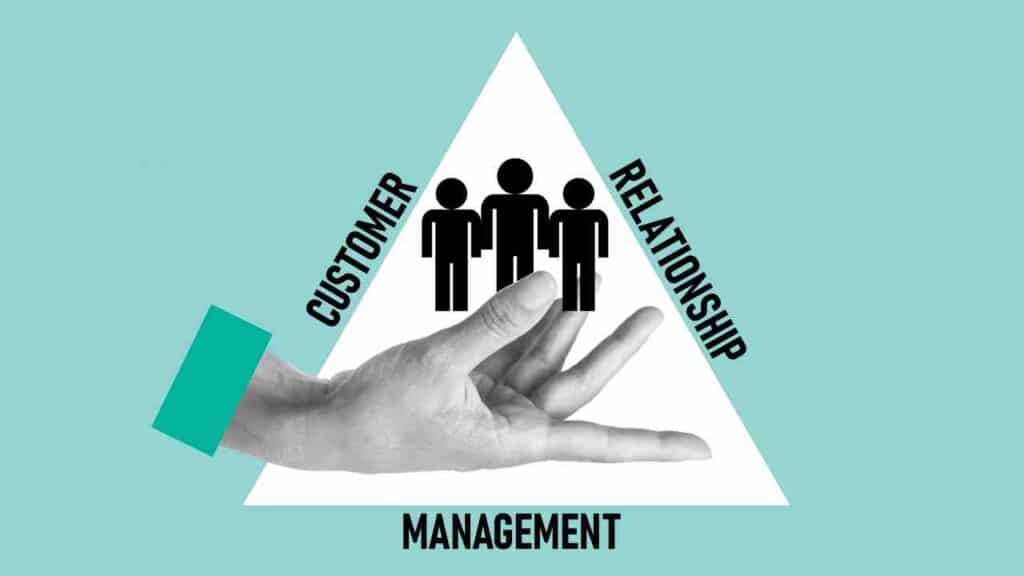How to Link Resources with Business Goals by CRM

Customer Relationship Management (CRM) is a powerful tool that can help businesses streamline their operations, improve customer satisfaction, and drive growth. However, many businesses fail to fully leverage the potential of CRM because they do not effectively link their resources with their business goals. In this article, we will explore how businesses can align their resources with their goals using CRM, and the benefits that can be achieved through this alignment.
Understanding the Link between Resources and Business Goals
Before we delve into the specifics of how CRM can help link resources with business goals, it is important to understand the relationship between the two. Resources refer to the assets, capabilities, and processes that a business possesses, while business goals are the desired outcomes or targets that a business aims to achieve.
Linking resources with business goals involves aligning the available resources in a way that supports the achievement of the desired outcomes. This alignment ensures that resources are utilized efficiently and effectively, maximizing the chances of success.
The Role of CRM in Linking Resources with Business Goals
CRM systems are designed to help businesses manage their customer relationships, but they can also play a crucial role in linking resources with business goals. Here are some ways in which CRM can facilitate this alignment:
1. Centralized Data Management
A CRM system serves as a centralized repository for customer data, allowing businesses to gather, store, and analyze information about their customers. This data can be used to gain insights into customer behavior, preferences, and needs, which can then be used to align resources with business goals.
For example, a business may identify through CRM data analysis that a significant portion of its customer base prefers online shopping. In response, the business can allocate more resources towards improving its e-commerce platform, ensuring that it aligns with the goal of increasing online sales.
2. Targeted Marketing and Sales Efforts
CRM systems enable businesses to segment their customer base and target specific groups with personalized marketing and sales efforts. By tailoring their messaging and offerings to the needs and preferences of different customer segments, businesses can optimize the use of their resources and increase the chances of achieving their goals.
For instance, a CRM system can help a business identify high-value customers who have a higher likelihood of making repeat purchases. The business can then allocate resources towards building stronger relationships with these customers, such as providing personalized offers or dedicated account managers, in order to maximize their lifetime value.
3. Streamlined Workflows and Processes
CRM systems can automate and streamline various workflows and processes, reducing manual effort and improving efficiency. By eliminating repetitive tasks and optimizing resource allocation, businesses can free up valuable time and resources that can be redirected towards achieving their goals.
For example, a CRM system can automate lead nurturing processes, ensuring that leads are consistently followed up with and nurtured until they are ready to make a purchase. This automation allows sales teams to focus their efforts on high-value leads, increasing the chances of conversion and aligning with the goal of increasing sales.
Case Study: XYZ Company
To illustrate the impact of linking resources with business goals through CRM, let’s consider the case of XYZ Company, a small e-commerce business. XYZ Company implemented a CRM system and used it to align their resources with their business goals.
XYZ Company’s primary goal was to increase customer retention and repeat purchases. By analyzing their CRM data, they identified that a significant number of customers were not making repeat purchases due to a lack of personalized recommendations.
In response, XYZ Company allocated resources towards implementing a recommendation engine within their CRM system. This engine analyzed customer purchase history and preferences to provide personalized product recommendations to each customer.
The implementation of the recommendation engine resulted in a significant increase in customer retention and repeat purchases. XYZ Company was able to align their resources with their business goal of increasing customer loyalty, resulting in improved revenue and profitability.
Benefits of Linking Resources with Business Goals through CRM
When businesses effectively link their resources with their goals using CRM, they can reap several benefits:
- Improved resource allocation: By aligning resources with business goals, businesses can ensure that their resources are allocated in a way that maximizes their impact and increases the chances of goal achievement.
- Enhanced customer satisfaction: CRM enables businesses to better understand their customers and tailor their offerings to their needs and preferences. This personalized approach can significantly improve customer satisfaction and loyalty.
- Increased efficiency and productivity: By automating workflows and streamlining processes, CRM systems can help businesses optimize their resource utilization and improve overall efficiency and productivity.
- Greater visibility and control: CRM provides businesses with real-time insights into their operations, allowing them to monitor progress towards their goals and make informed decisions based on accurate data.
Linking resources with business goals is essential for businesses to achieve success and growth. CRM systems play a crucial role in facilitating this alignment by providing centralized data management, enabling targeted marketing and sales efforts, and streamlining workflows and processes.
By effectively linking resources with business goals through CRM, businesses can improve resource allocation, enhance customer satisfaction, increase efficiency and productivity, and gain greater visibility and control over their operations.
Implementing a CRM system, such as the all-in-one sales and marketing platform offered by SaasExpert.ca, can empower small businesses, agency owners, and marketers to align their resources with their goals and drive growth in a competitive market.
Learn more about the “Strategies for Aligning Resources Using CRM” right here.
Frequently asked questions about How to Link Resources with Business Goals by CRM.

How does a CRM help in aligning my company’s resources with our business objectives? 🎯
A CRM system serves as a central hub for all your customer-related data which directly informs your business goals. By analyzing customer interactions, purchase history, and service requests, you can identify trends and areas for growth. For example, if your business goal is to increase cross-sales, your CRM can identify existing customers who may be interested in additional products based on their purchase history. By aligning these insights with marketing and sales efforts, you ensure your resources are focused on achievable, data-backed objectives. The CRM also helps in setting measurable goals for sales teams and tracks progress in real-time, ensuring resources are always in line with your goals.💼
Can CRM systems provide insights for better resource allocation to meet my sales targets? 📈
Definitely! CRMs are powerful in providing actionable insights through their advanced analytics capabilities. They can forecast sales trends, identify high-value customers, and predict customer needs. With this information, you can allocate your sales and marketing resources more effectively. For example, if the CRM identifies a high potential for upselling in a particular segment, you can direct your sales team’s efforts and budget towards that segment. This targeted allocation of resources ensures that your team is working on tasks that directly contribute to meeting your sales targets.🎲
What role does CRM play in strategic planning for resource management? 🗓️
CRM systems play a critical role in strategic planning by providing a 360-degree view of your business operations. They help in understanding customer lifecycles and identifying key touchpoints for engagement. By doing so, you can strategically plan where and when to invest your resources for maximum impact. For instance, if the CRM data reveals that customer engagement peaks during certain seasons, you can plan to allocate more resources during these periods to capitalize on the opportunity. This leads to smarter resource management and helps in achieving strategic business goals.🔍
How can I use CRM to ensure that my resource investment is driving towards my business priorities? ⚙️
Your CRM is a treasure trove of data that, when used correctly, ensures that every resource invested is driving toward your business priorities. Start by defining your key business objectives within the CRM. Then, utilize the CRM’s tracking and reporting features to measure the performance of various resources against these objectives. By setting up custom dashboards, you can monitor the ROI of different departments and initiatives in real-time. This ongoing analysis allows you to continuously adjust and redirect resources to the areas that support your most pressing business priorities.♻️
What best practices should I follow when using CRM to link my business goals with resource planning? ✅
Best practices for using CRM to link resources with business goals include regularly updating your CRM data to reflect real-time insights, ensuring that your team is fully trained on CRM functionalities to leverage its full potential, and using CRM reports to inform decision-making. It’s also essential to integrate your CRM with other systems, such as inventory management and HR, to have a cohesive approach to resource planning. Regularly review your CRM strategies and adapt them as your business goals evolve. By doing so, your resource planning will remain agile, precise, and, most importantly, aligned with your long-term business goals.🔄
- crm
- customer relationship management
- How to Link Resources with Business Goals by CRM
- What is CRM Software?






